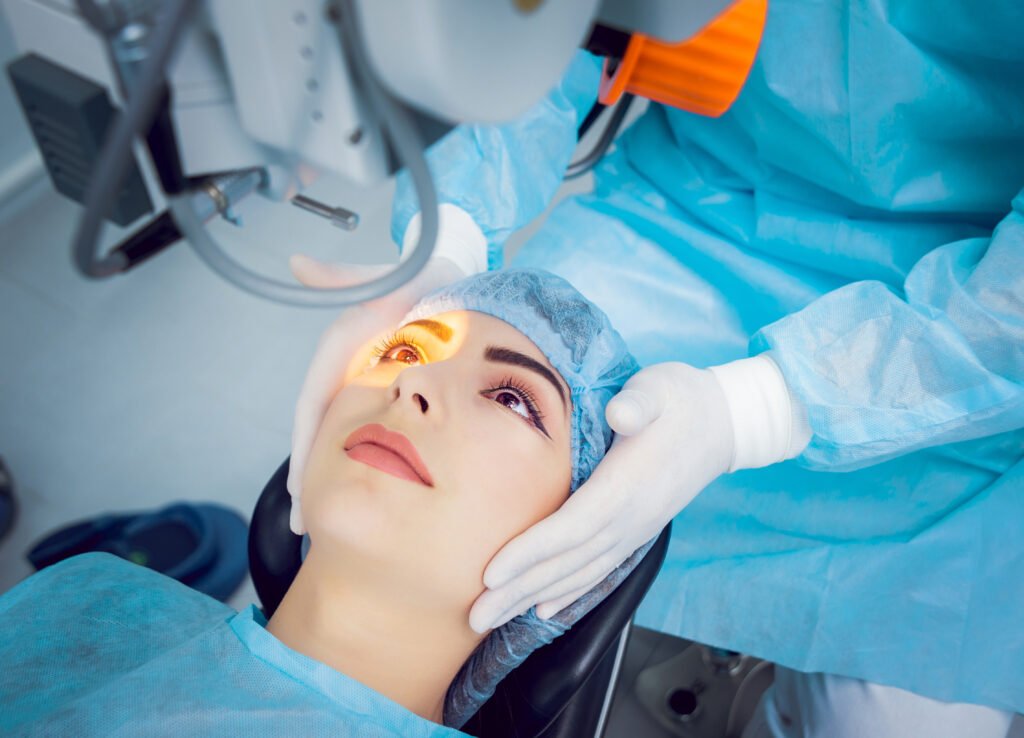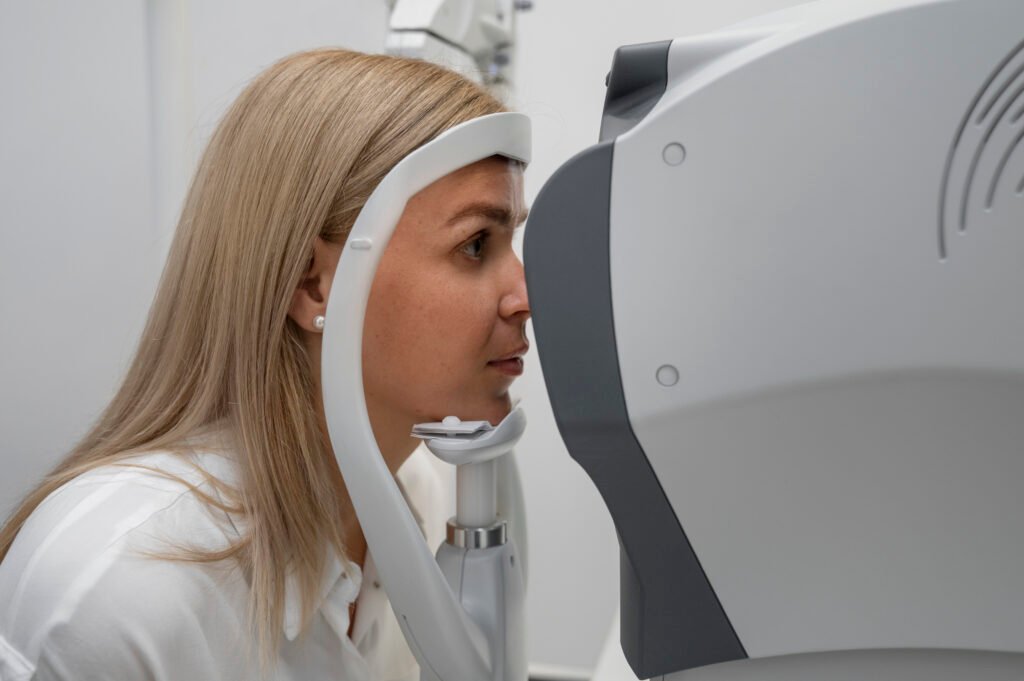PRK (Photorefractive Keratectomy) is a laser eye surgery that corrects nearsightedness, farsightedness, and astigmatism. Unlike LASIK or FEMTOLASIK, PRK does not create a corneal flap. Instead, the thin outer layer of the cornea (epithelium) is gently removed, and an excimer laser reshapes the cornea directly. This makes PRK an excellent option for patients with thinner corneas or certain conditions where LASIK is not recommended.

After applying numbing drops, the surgeon removes the corneal epithelium using a gentle technique. An excimer laser is then applied to reshape the corneal surface to correct refractive errors. A special therapeutic contact lens is placed temporarily to protect the cornea while it heals naturally.
You may be a candidate if you:
PRK is a safe, effective alternative for those not eligible for other laser surgeries.
Your evaluation includes advanced diagnostic tests such as corneal topography, pachymetry (corneal thickness), refraction, and a full ocular health exam. Based on your results, our specialists will explain whether PRK or another procedure is best for your eyes.

Stop wearing contact lenses for the recommended time before surgery. Avoid eye makeup on the day of the procedure. Your ophthalmologist may prescribe lubricating or antibiotic drops before surgery to ensure optimal recovery.
The procedure begins with numbing eye drops. The thin outer corneal layer (epithelium) is gently removed. An excimer laser reshapes the cornea based on your personalized prescription. Finally, a protective bandage contact lens is placed to aid healing. The entire surgery takes less than 20 minutes per eye and is performed on an outpatient basis.
Key Benefits Include:
Recovery after PRK is slower than LASIK or FEMTOLASIK. Most patients experience functional vision within 5–7 days, with full stabilization over several weeks. Discomfort such as burning, tearing, or light sensitivity is common during the first few days and managed with prescribed drops and the therapeutic lens.
Follow-up visits are scheduled the day after surgery, several times during the first week, and again at one month. These visits are crucial to monitor epithelial healing, check vision stability, and adjust medications as needed. Adhering to the follow-up schedule ensures safe recovery and optimal results.
Mild discomfort is common in the first few days but controlled with medication and protective lenses.
Most patients achieve functional vision within a week, with full clarity in 1–3 months.
Yes, once the cornea heals, results are long-lasting.
It’s safer for thin corneas and eliminates flap-related risks.
Yes, though recovery may be more noticeable compared to LASIK.

Looking for a safe alternative to LASIK? Discover if PRK surgery in Monterrey is the right choice for you.